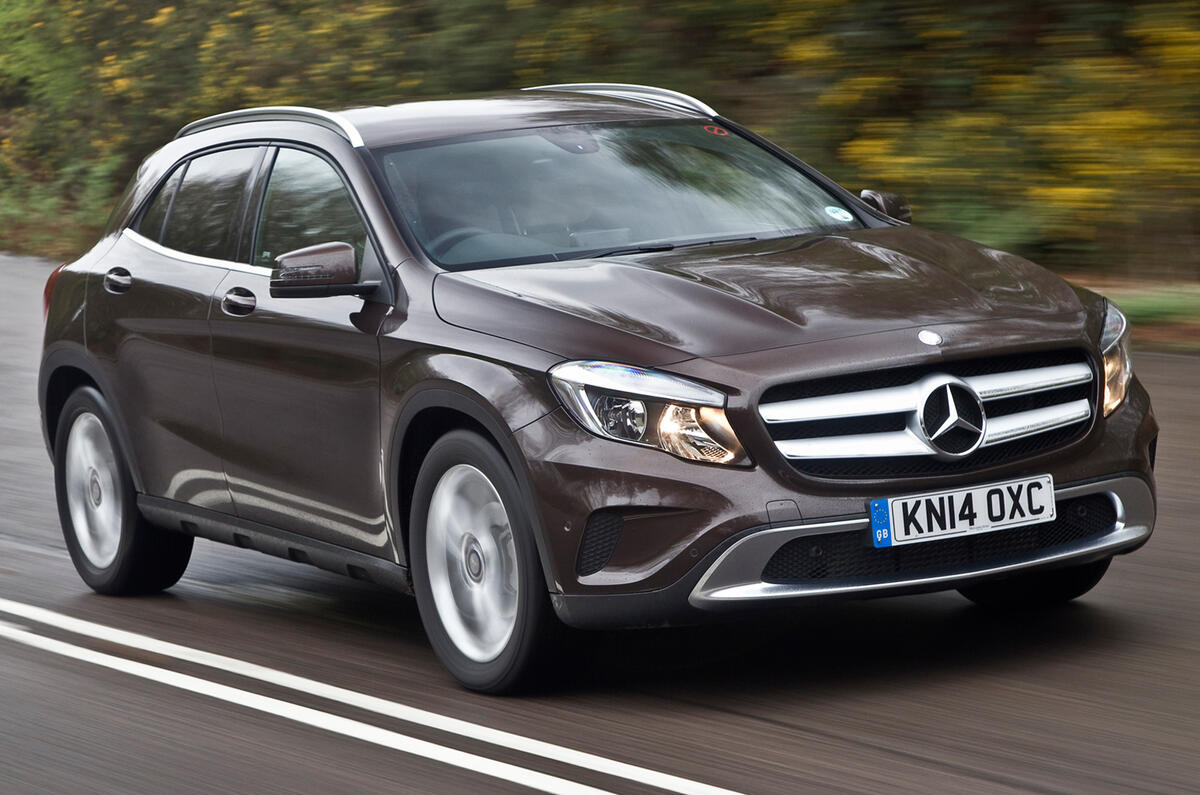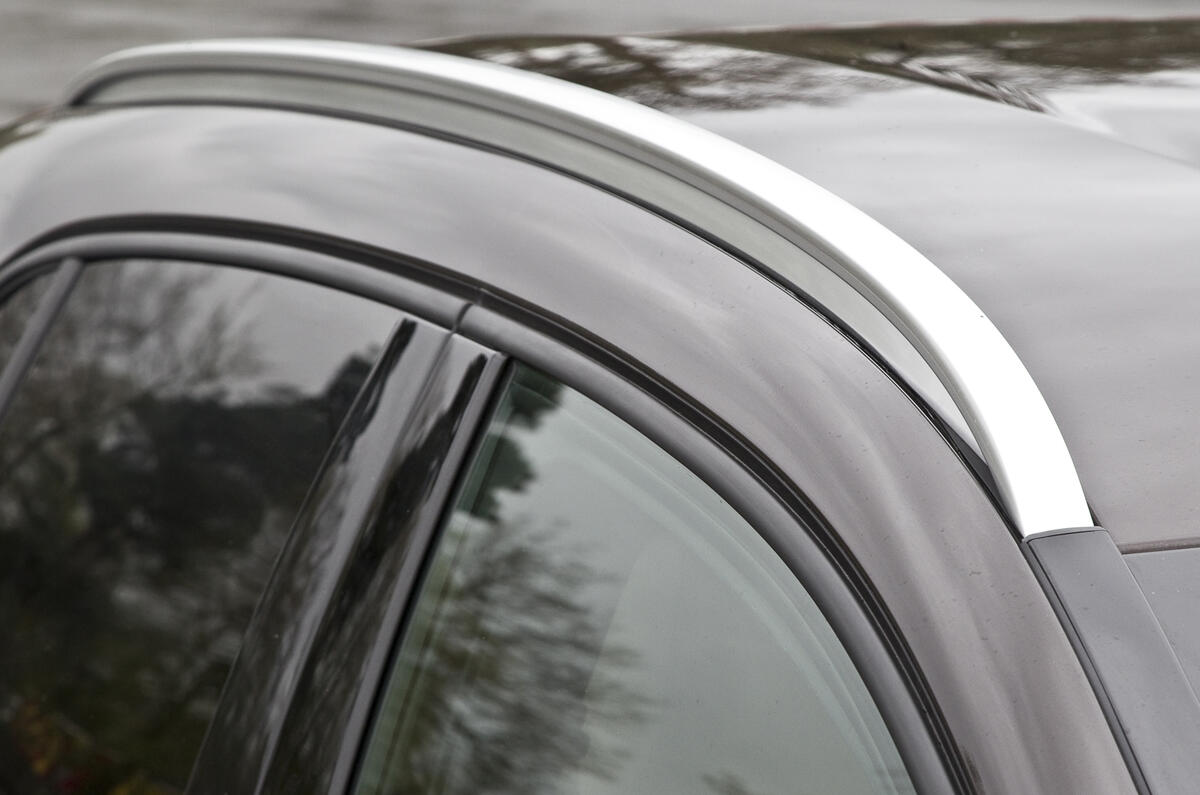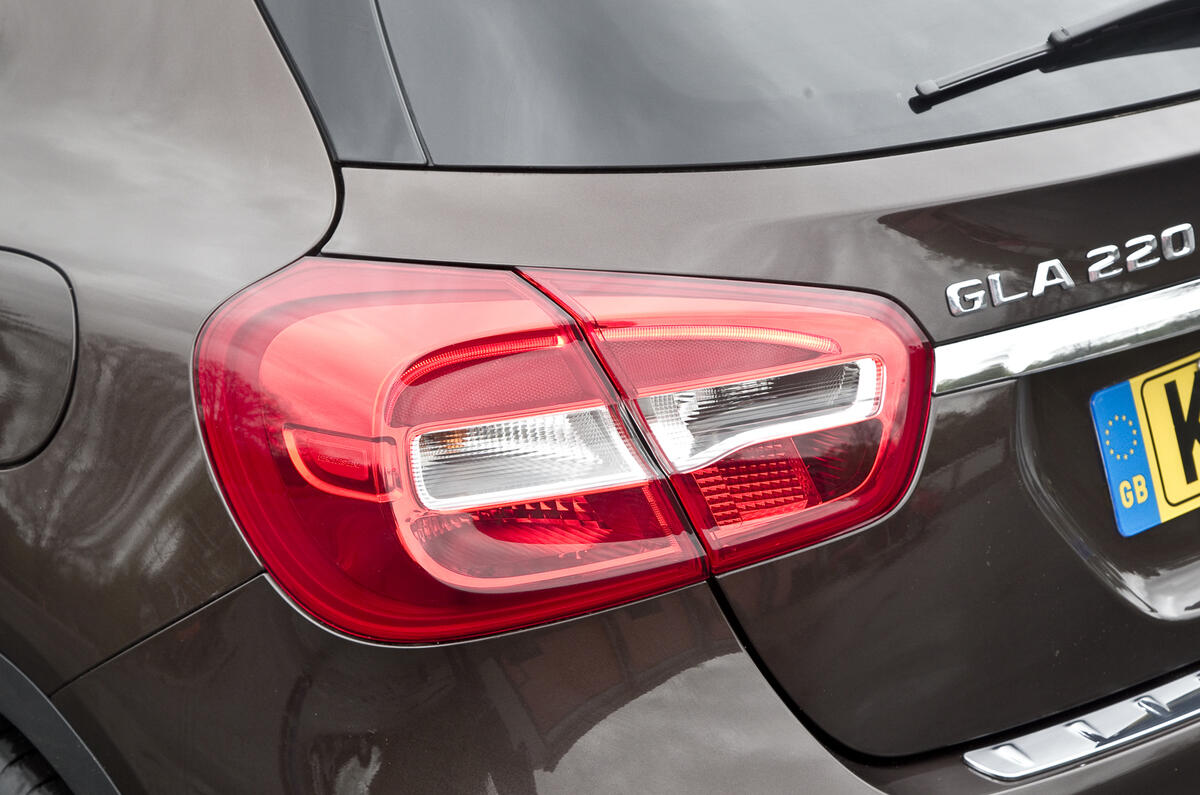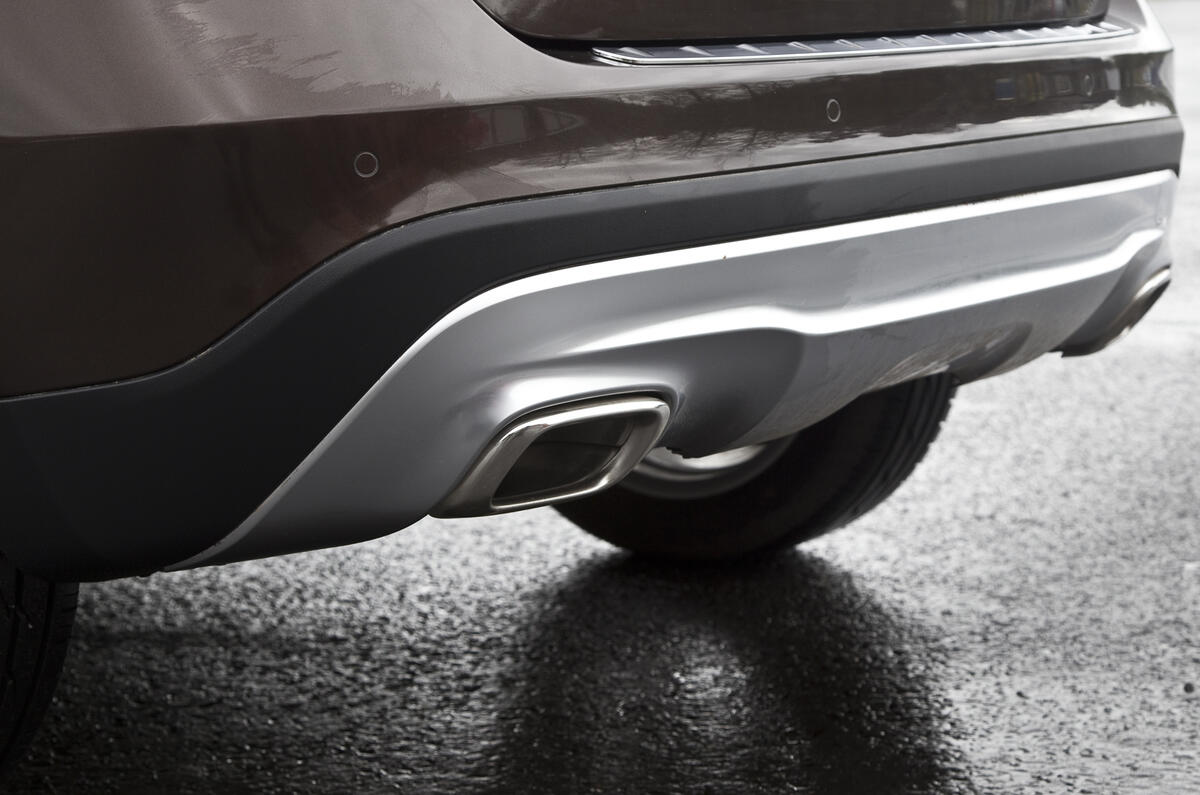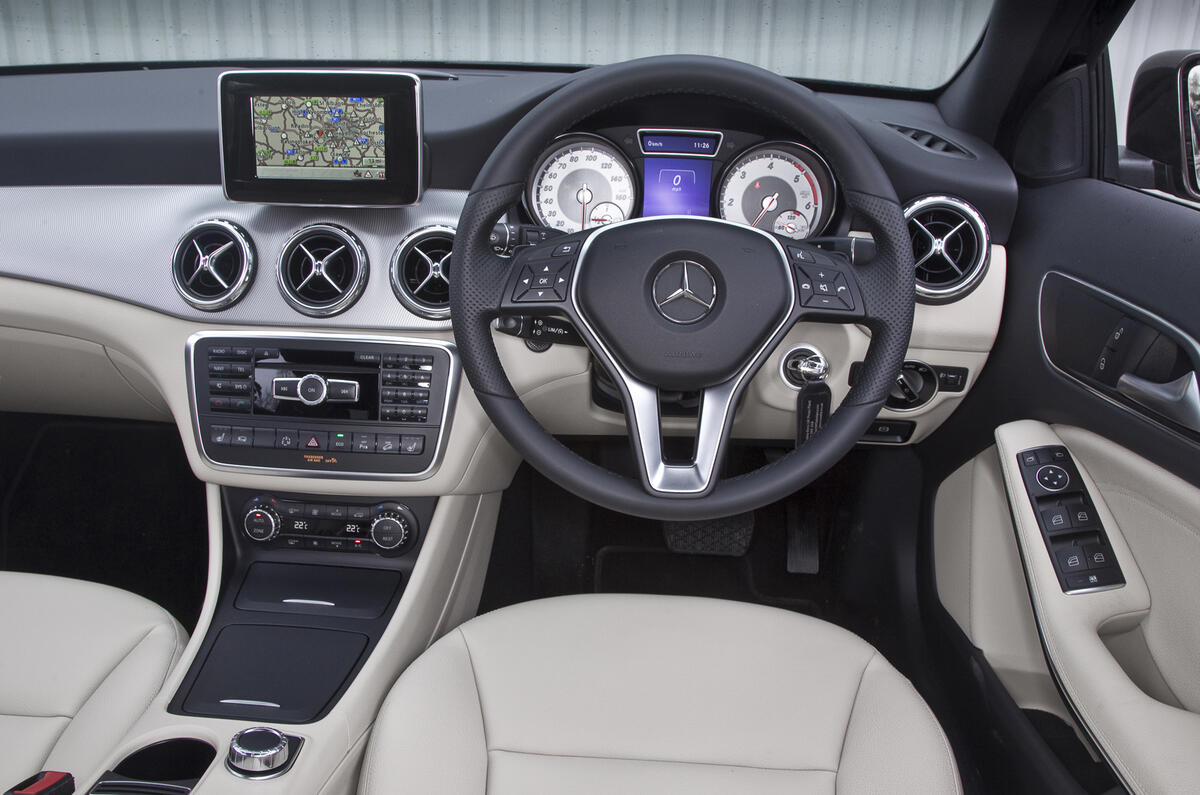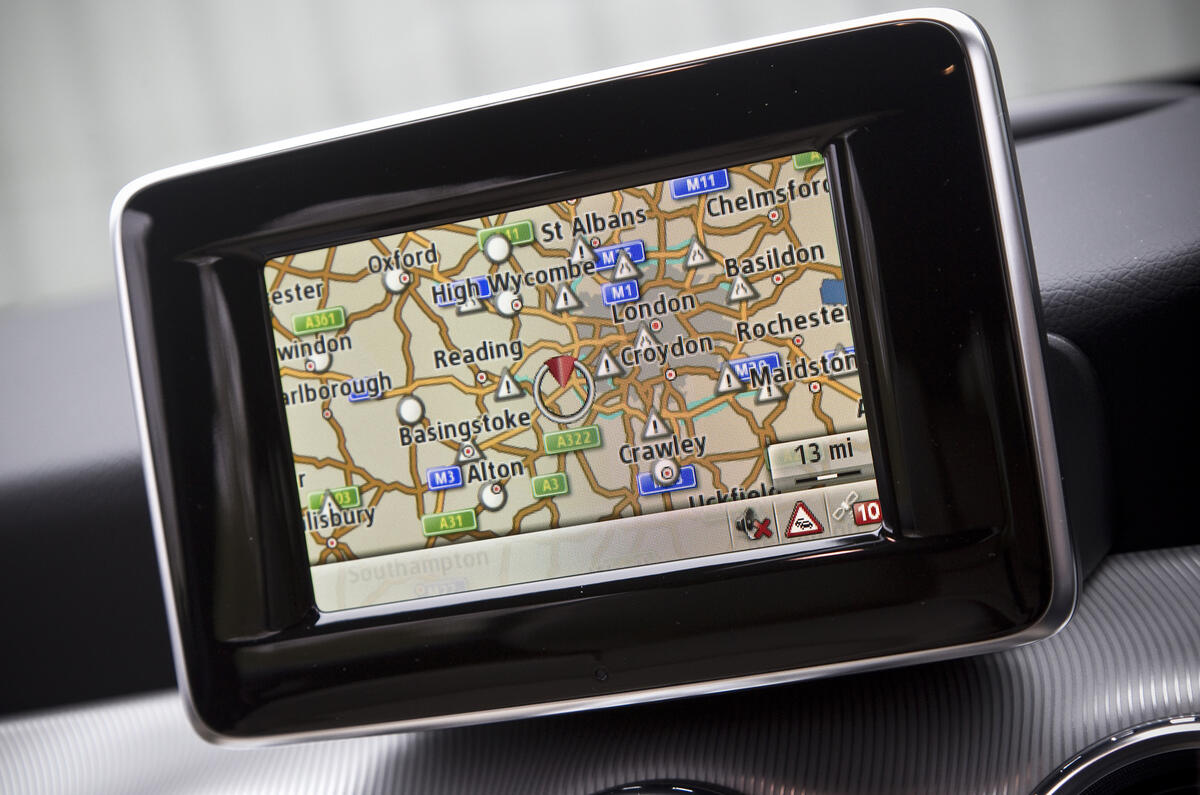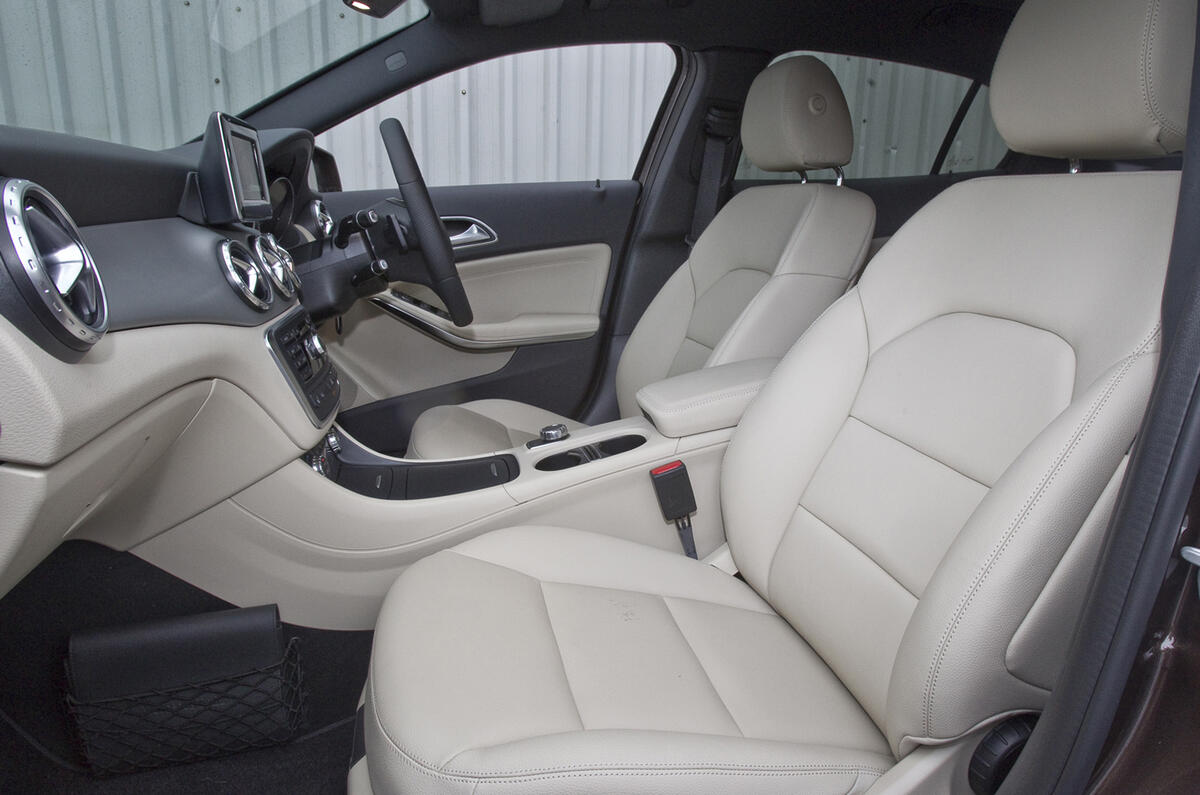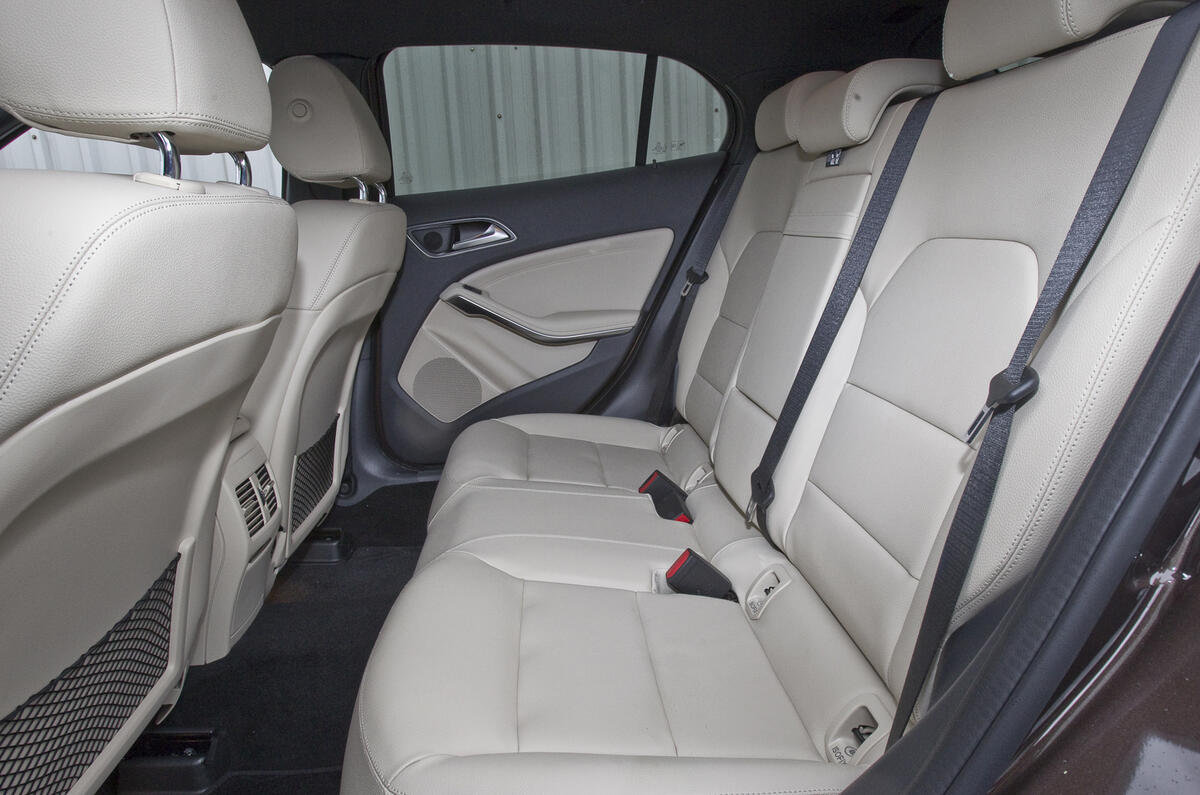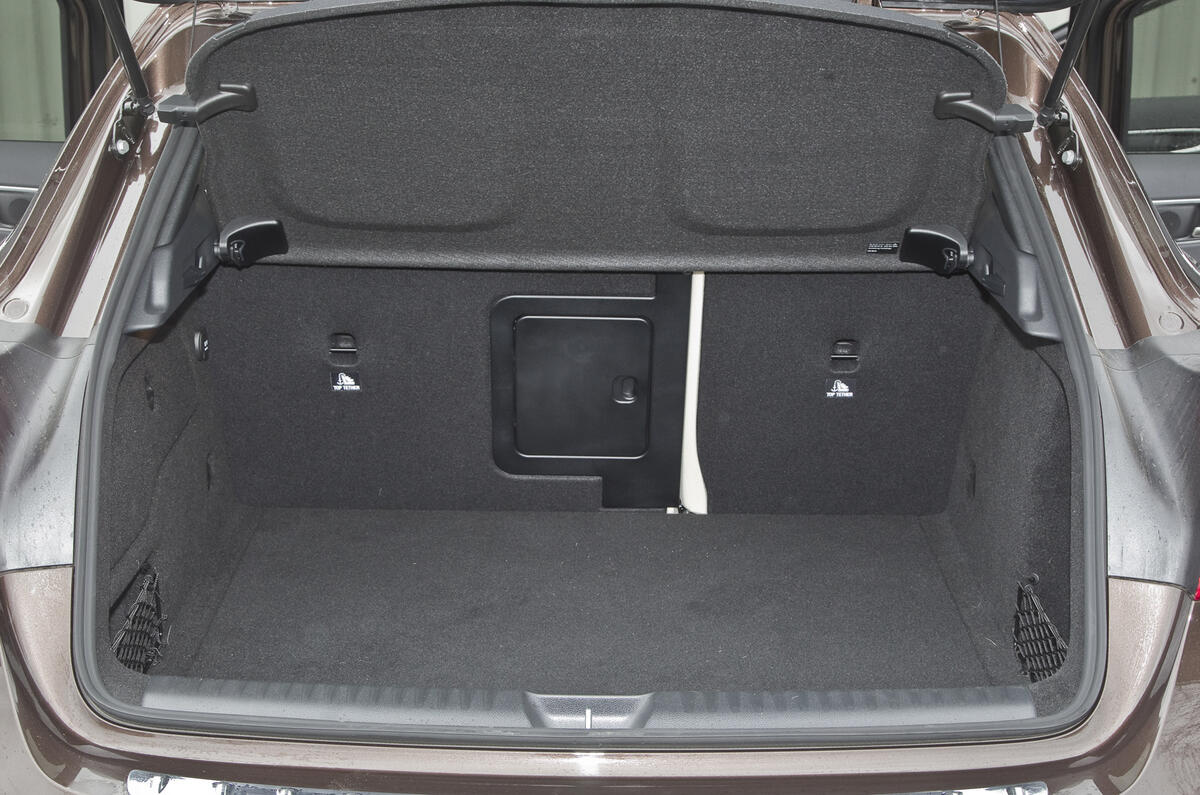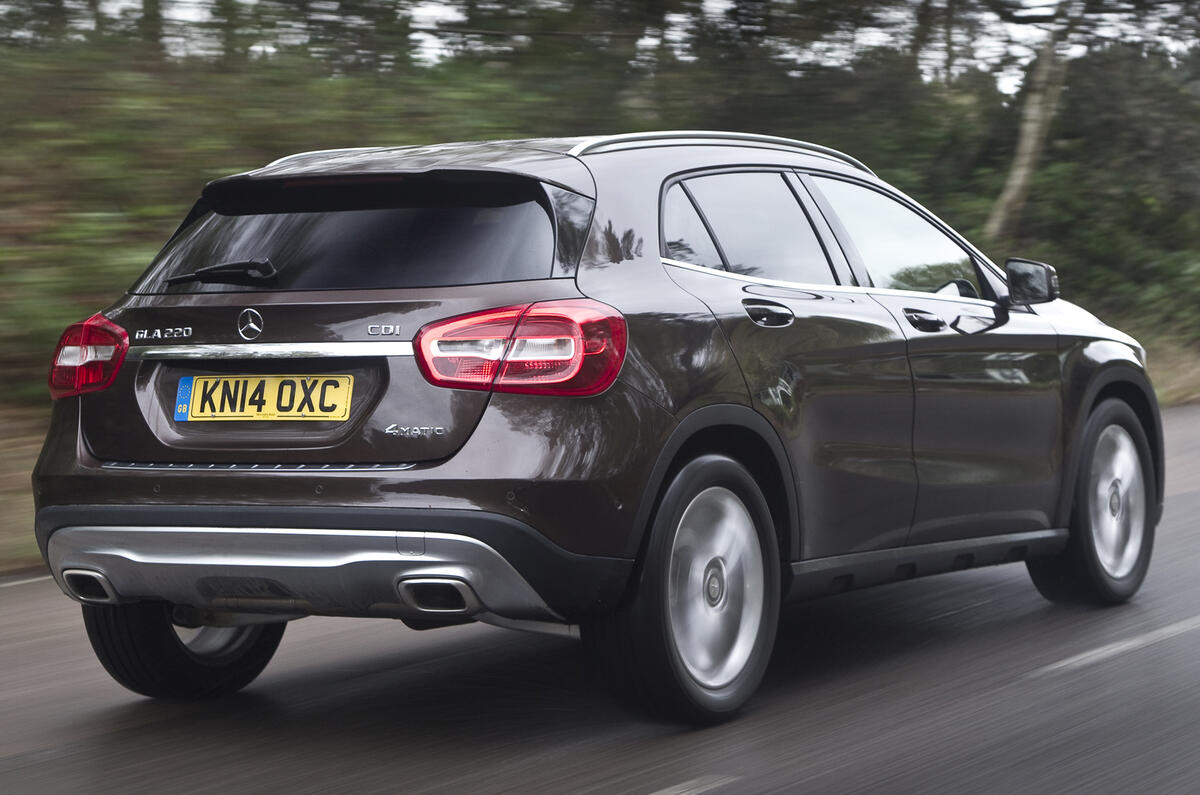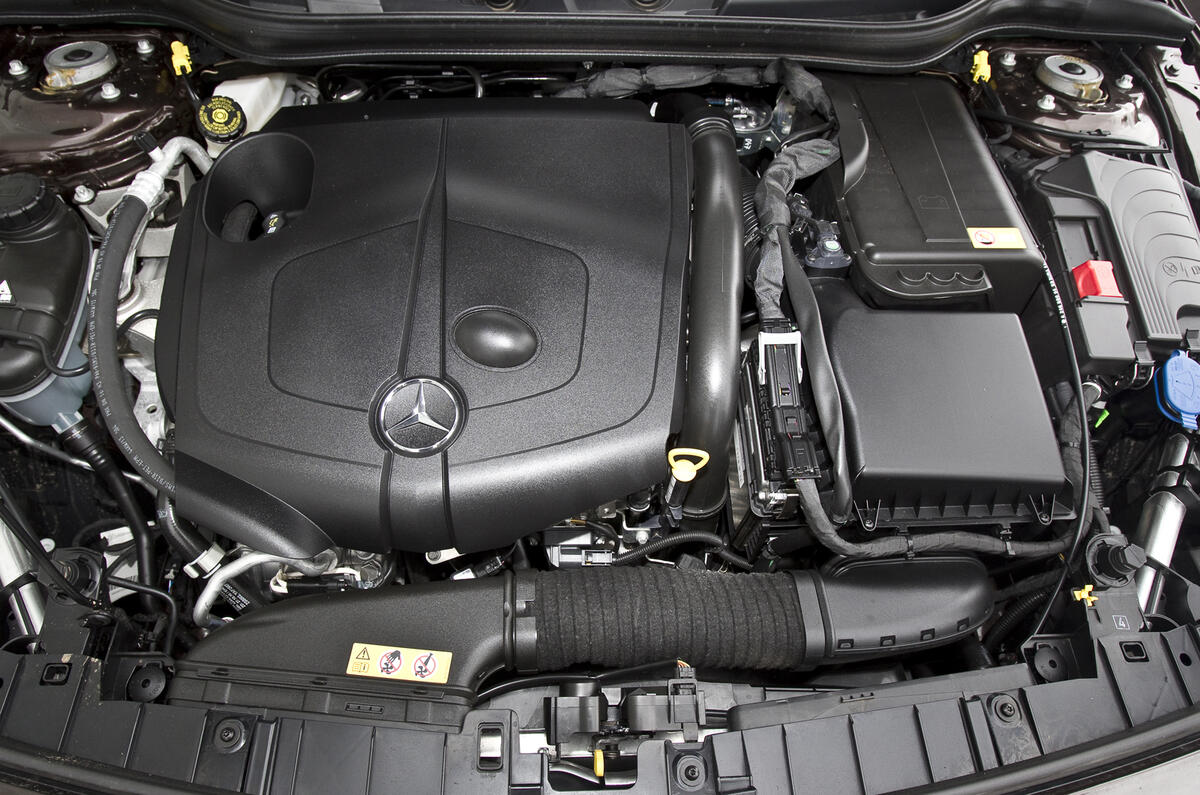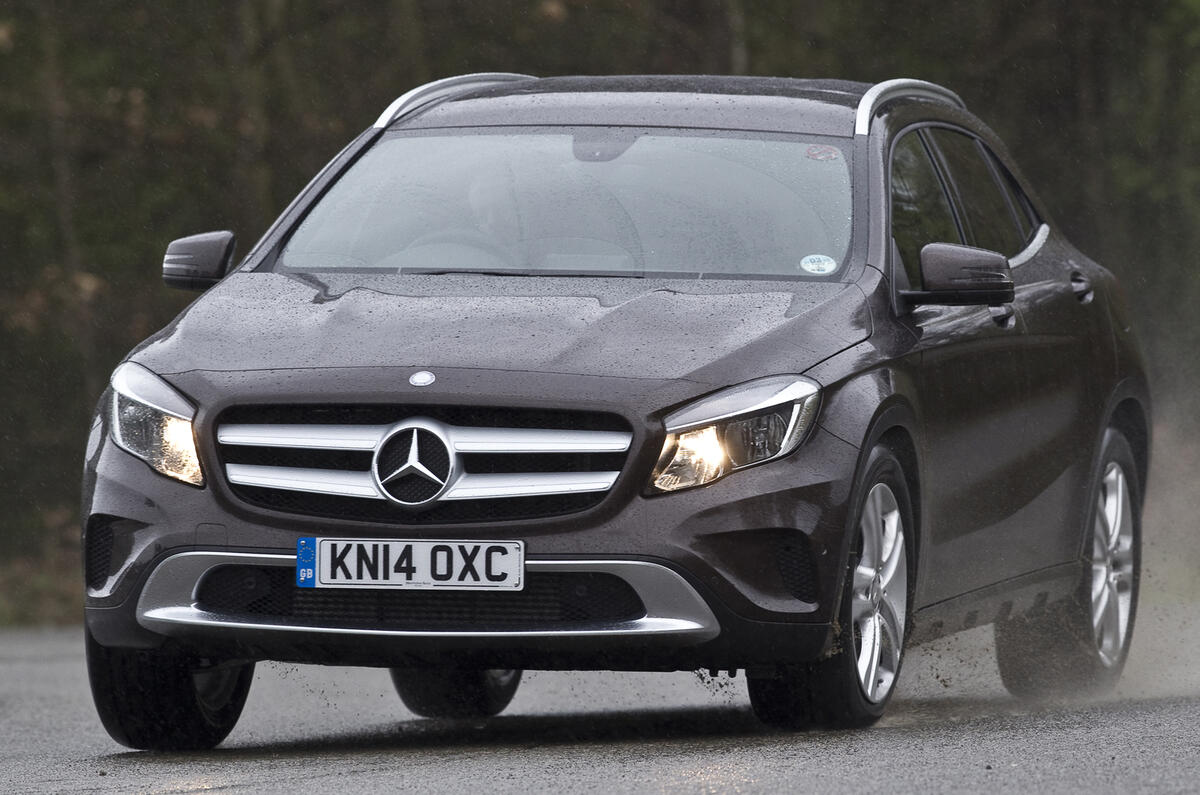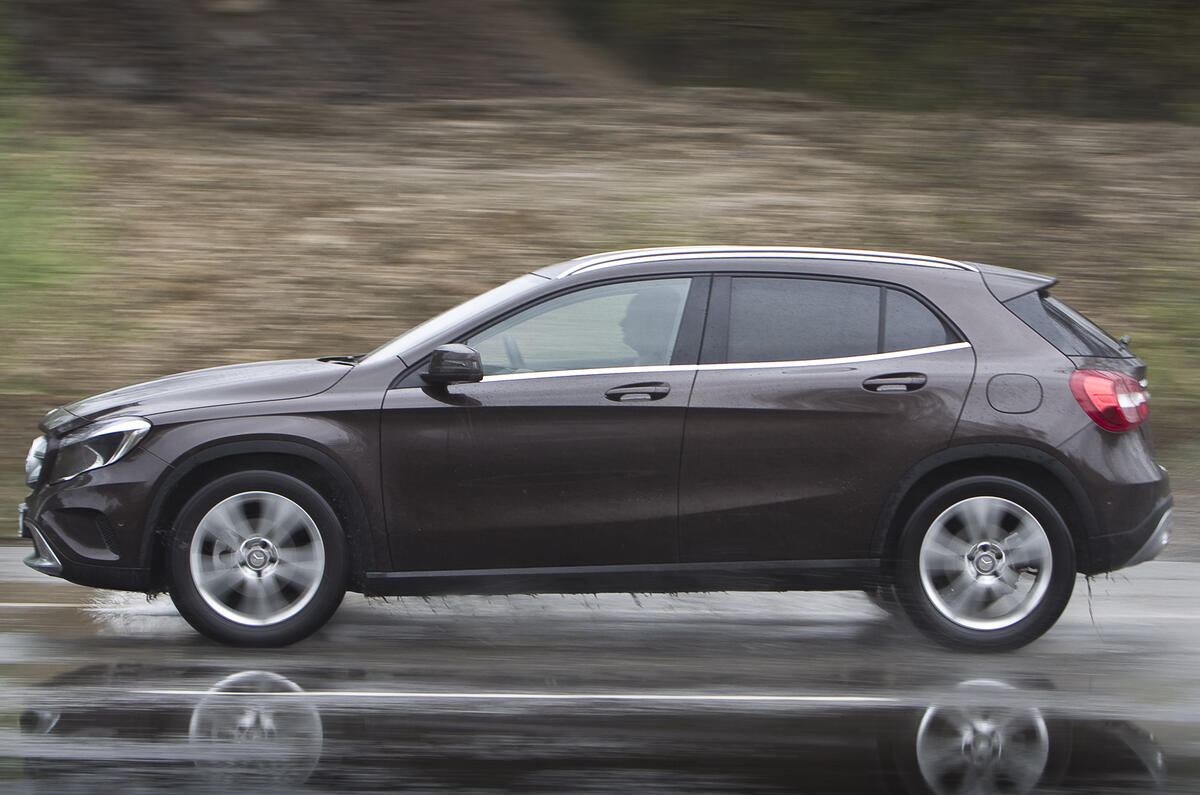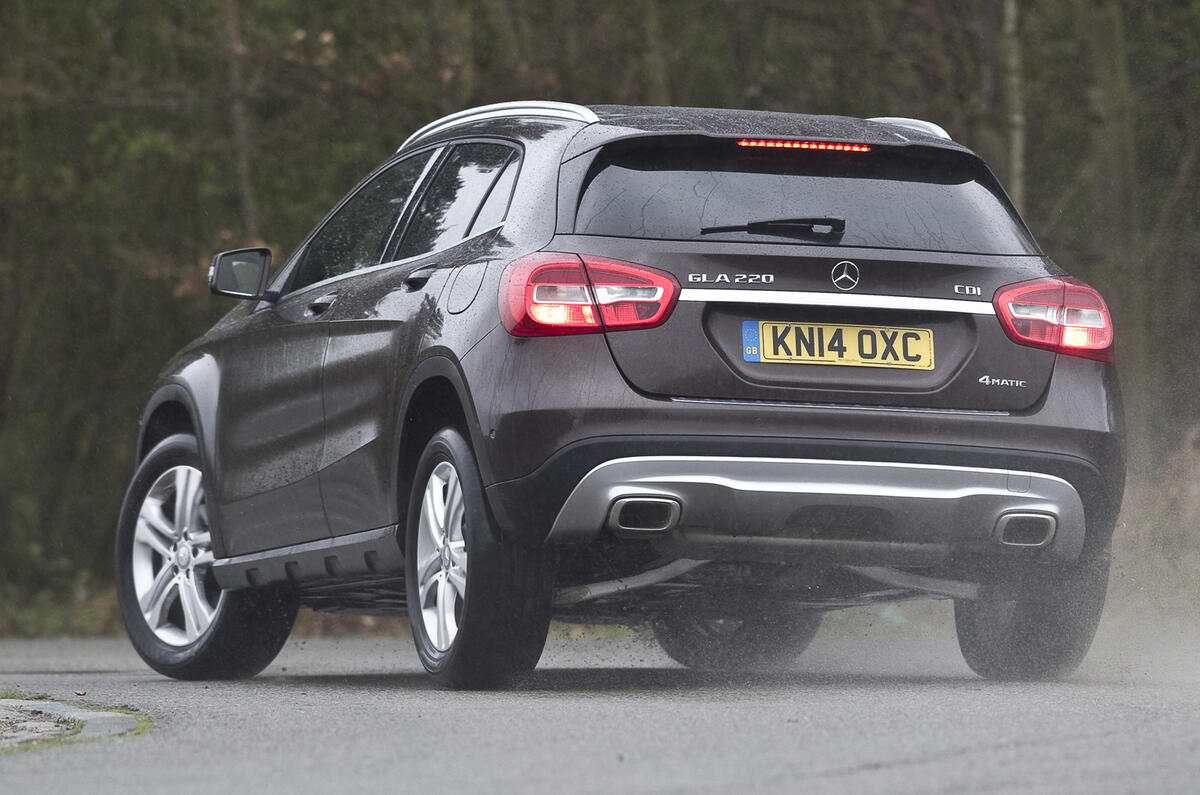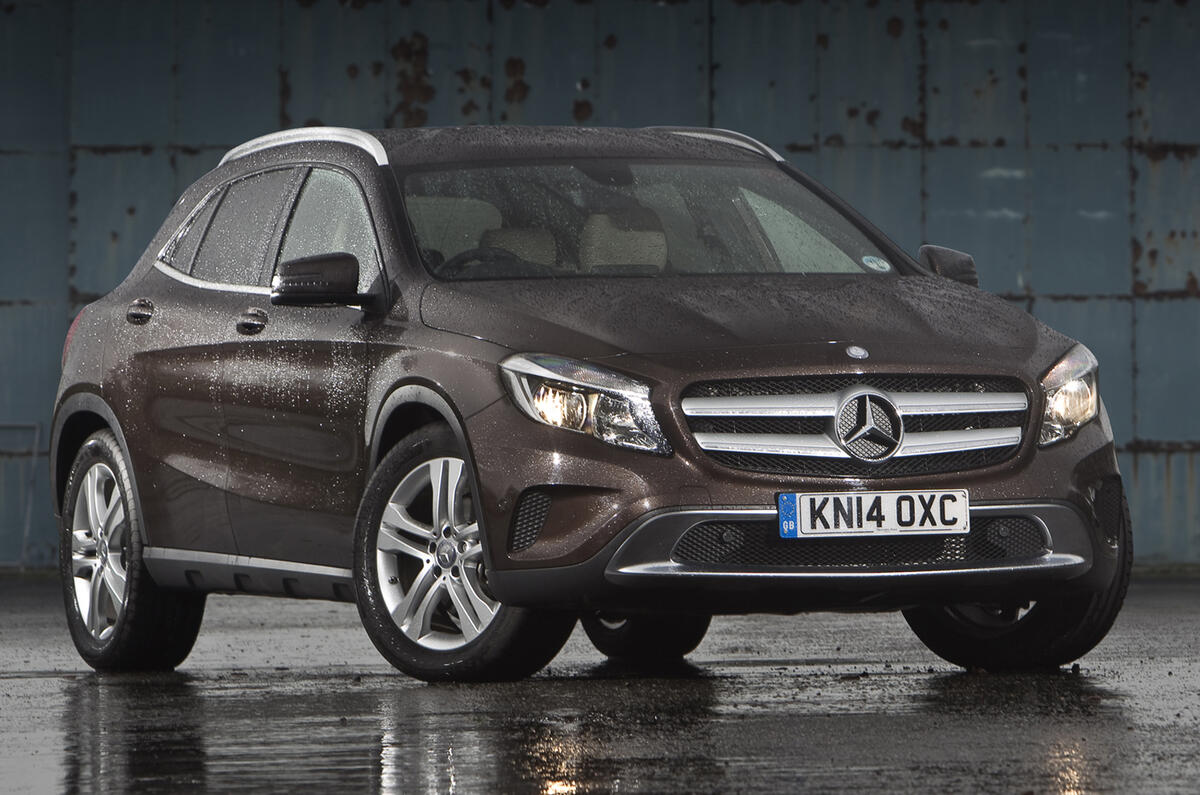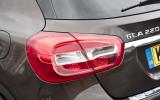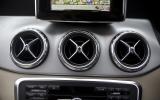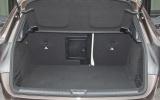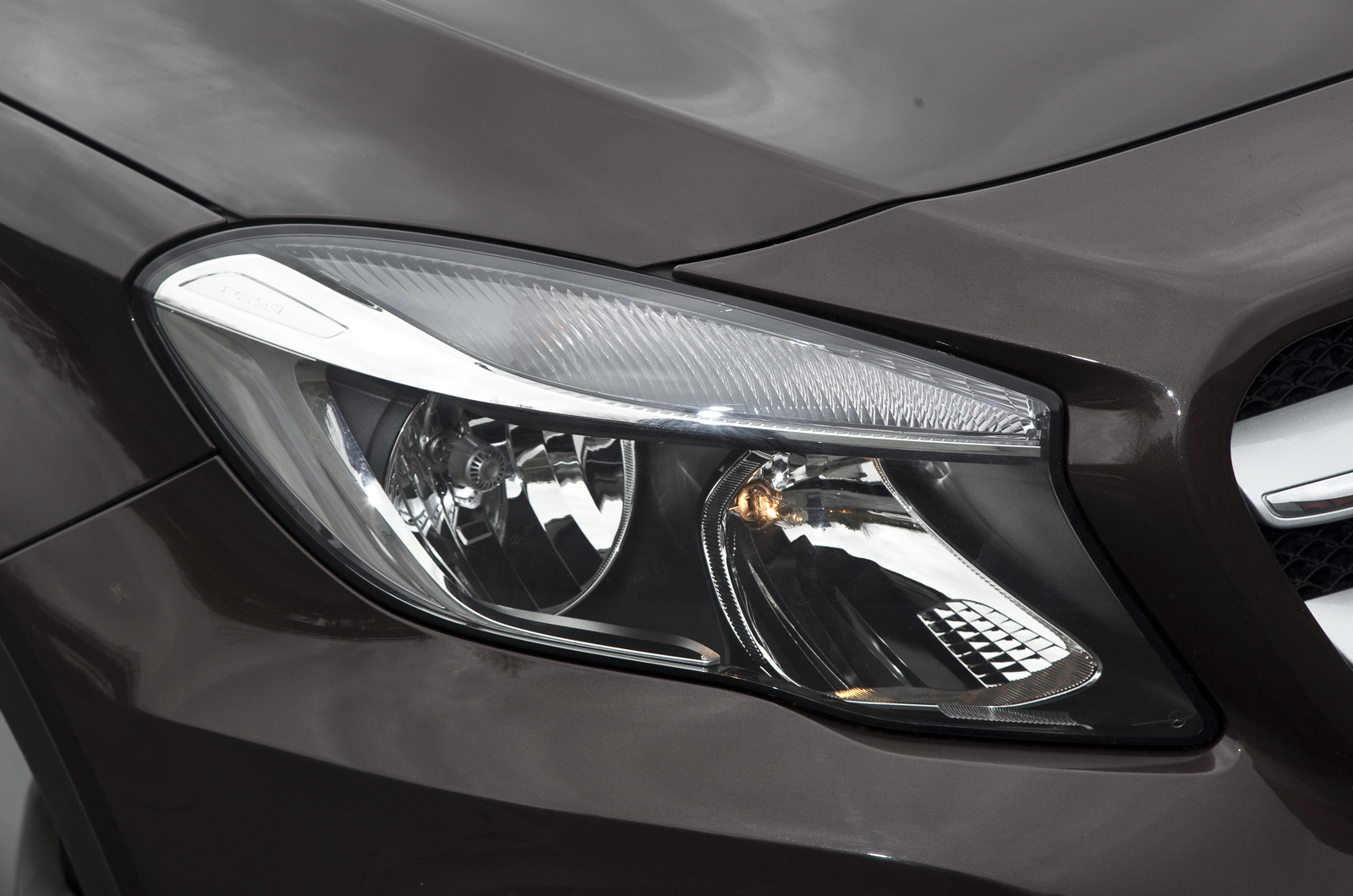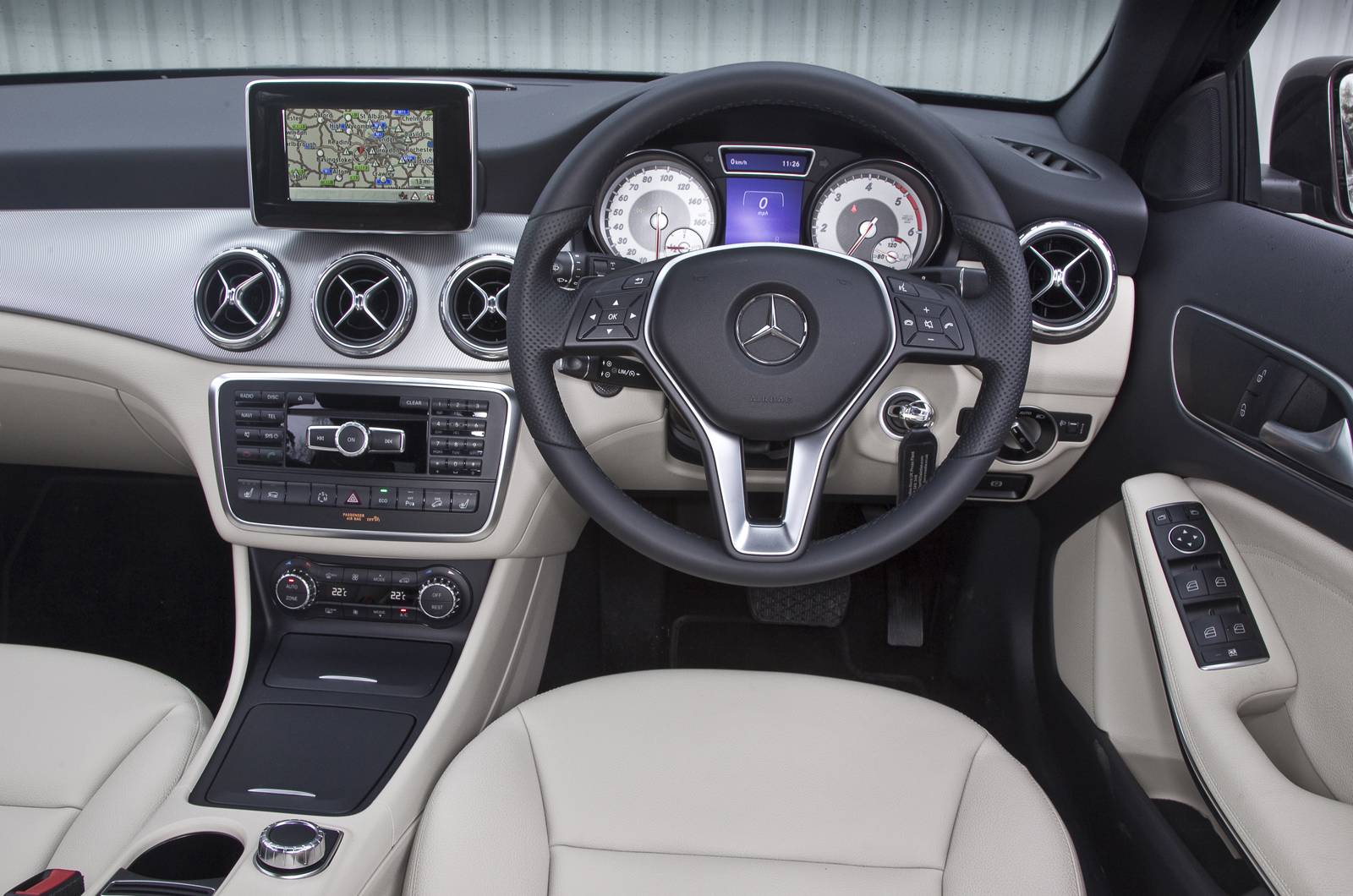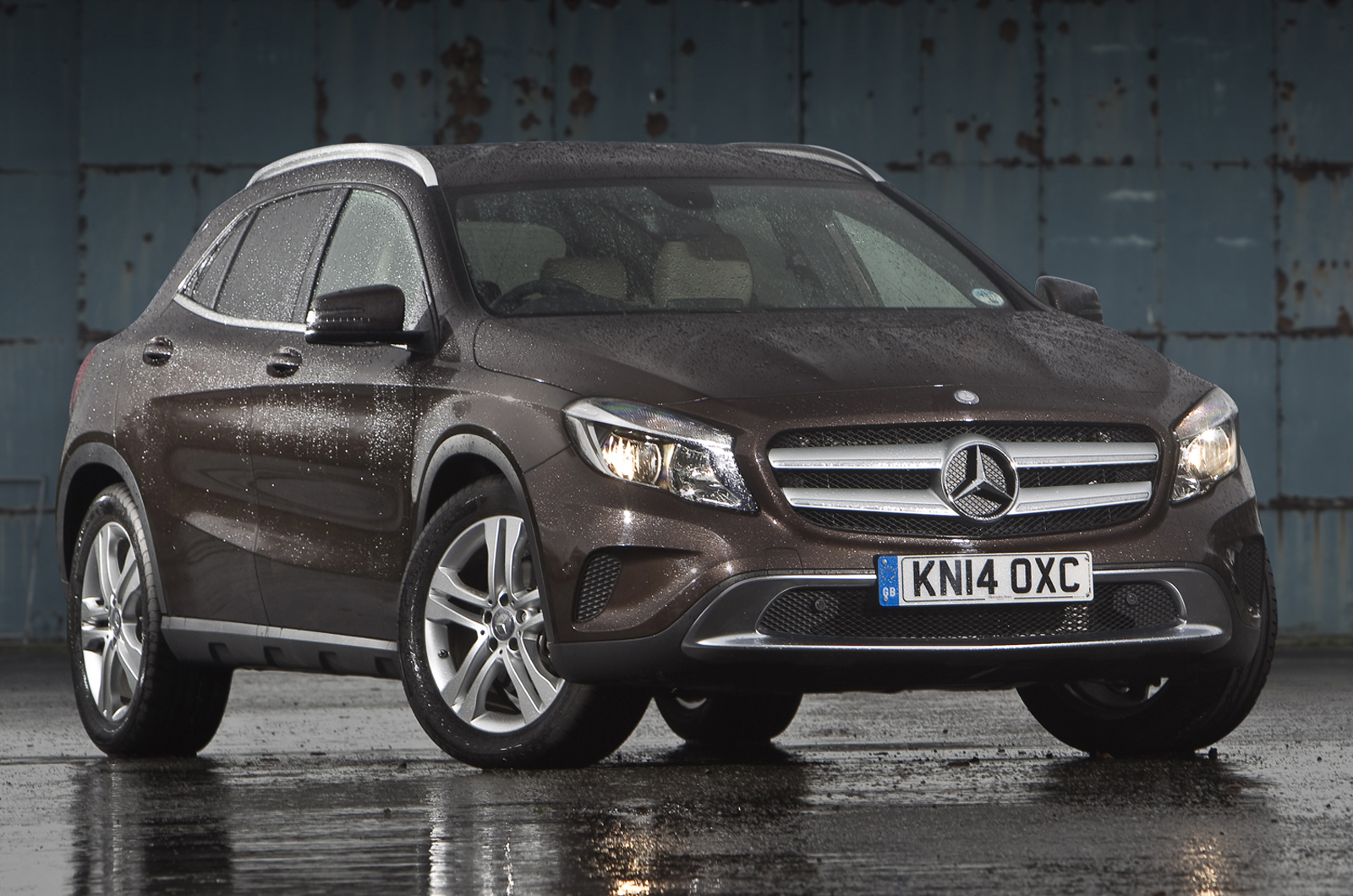It’s hard to believe that Mercedes hasn’t eyed Audi’s compact vehicle sales growth and noted what its buyers really seem to care about: quality interiors, whether shared with other models or not.
Like other cars on the small Merc platform, the Mercedes GLA gets a suitably plush-feel interior. There’s a broad strip of metallic-finish plastic across the dashboard lined with five sweet air vents, and the dual-tone finish above and below exudes a grown-up Mercedes feel, which is no bad thing at all.
First impressions are good, then, and they tend to stay that way. We’re not entirely sold on the cheap finish of the steering wheel buttons, but the rim is pleasingly sized and sculpted, while the seats (standard artificial leather chairs) are large and comfortable. At 4419mm long, the GLA is a relatively compact car, but you wouldn’t know that from the accommodation in the front.
You can just about sit two adults in the rear behind two adults in the front – but no more comfortably than in most compact cars. The rear seat backs split and fold 70/30 and, if you spec the appropriate option (not fitted on our car), even adjust the rear seat back angle, freeing up an additional 60 litres of boot space.
The boot itself is a competitive 421 litres with the rear seats in place, rising to 836 litres if you sling them forwards. Beneath the boot floor is, sadly, a repair kit rather than a spare but also a neat folding storage box for stowing loose or dirty items so you don’t have to worry about spillages. In a proper SUV, we’d criticise that kind of decision, but in a crossover the greater flexibility of storage is probably more important than a spare wheel.
As for the standard equipment there are three trim levels on offer: SE, Sport and AMG Line. Entry-level kit includes 17in alloy wheels, active brake assist and off-road suspension set-up on the outside as standard, while inside there is a leather upholstery, reversing camera, extensive cubbyholes, air conditioning, and Mercedes' Audio 20 infotainment system. The mid-range Sport models gain bigger alloys, aluminium roof rails, privacy glass, automatic wipers, climate control and an 8.0in infotainment display.
The range-topping AMG Line trim adorns your GLA with 19in alloy wheels, run-flat tyres, stainless steel pedals and leather sports seats. Those intent on the Mercedes-AMG GLA 45 will find an AMG-tweaked exhaust and braking systems, folding mirrors, bi-xenon headlights, parking sensors on the outside along with an aggressive bodykit. Inside there are plenty of AMG badging and decals, Garmin-powered sat nav and heated Performance sports front seats.
Familiar Mercedes-Benz communications systems feature in the GLA, which means that they’re very good. The central display pod — and very 21st century it looks, too — sits atop the middle of the dashboard and deals with navigation, audio and communications set-up, as well as some vehicle status data, such as consumption history and off-road info. The controller — a pushable, movable wheel on the centre console — does the honours.
Other trip features, plus driving aids and the like, are dealt with by using the steering wheel controls. The control logic here is to cycle left and right through the various driver assist, trip, communication and navigation functions displayed on the central instrument display screen using your left thumb.



